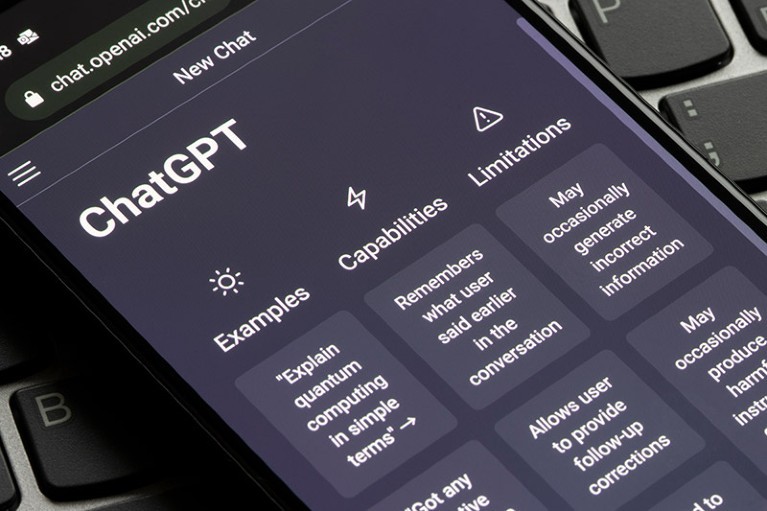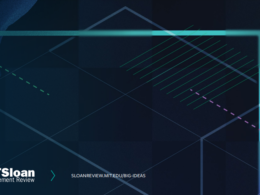institute for health transformation (InHealth)
Joaquim Cardoso MSc
Chief Researcher, Editor and CSO
January 26, 2023
EXECUTIVE SUMMARY
As researchers dive into the world of advanced AI chatbots, it is important for publishers to lay down clear guidelines to avoid abuse.
- ChatGPT, a large language model (LLM) developed by OpenAI, has brought the capabilities of these tools to a mass audience, making it easy for users to generate fluent language that can be used for research assistance and even pass off as written by a human.
- However, there is also concern about the potential for abuse, such as passing off LLM-written text as one’s own or using LLMs in a simplistic fashion to produce unreliable work.
Nature, along with all Springer Nature journals, has formulated the following two principles, which have been added to our existing guide to authors (see go.nature.com/3j1jxsw).
- First, no LLM tool will be accepted as a credited author on a research paper.
- That is because any attribution of authorship carries with it accountability for the work, and AI tools cannot take such responsibility.
- Second, researchers using LLM tools should document this use in the methods or acknowledgements sections.
- If a paper does not include these sections, the introduction or another appropriate section can be used to document the use of the LLM.
As Nature’s news team has reported, other scientific publishers are likely to adopt a similar stance.
DEEP DIVE

Tools such as ChatGPT threaten transparent science; here are our ground rules for their use
As researchers dive into the brave new world of advanced AI chatbots, publishers need to acknowledge their legitimate uses and lay down clear guidelines to avoid abuse.
Nature
Editorial
24 January 2023
As researchers dive into the brave new world of advanced AI chatbots, publishers need to acknowledge their legitimate uses and lay down clear guidelines to avoid abuse.
It has been clear for several years that artificial intelligence (AI) is gaining the ability to generate fluent language, churning out sentences that are increasingly hard to distinguish from text written by people.
Last year, Nature reported that some scientists were already using chatbots as research assistants — to help organize their thinking, generate feedback on their work, assist with writing code and summarize research literature (Nature 611, 192–193; 2022).
Last year, Nature reported that some scientists were already using chatbots as research assistants — to help organize their thinking, generate feedback on their work, assist with writing code and summarize research literature

But the release of the AI chatbot ChatGPT in November has brought the capabilities of such tools, known as large language models (LLMs), to a mass audience.
Its developers, OpenAI in San Francisco, California, have made the chatbot free to use and easily accessible for people who don’t have technical expertise.
Millions are using it, and the result has been an explosion of fun and sometimes frightening writing experiments that have turbocharged the growing excitement and consternation about these tools.
- ChatGPT can write presentable student essays,
- summarize research papers,
- answer questions well enough to pass medical exams and
- generate helpful computer code.
- It has produced research abstracts good enough that scientists found it hard to spot that a computer had written them.
Worryingly for society, it could also make spam, ransomware and other malicious outputs easier to produce.
Although OpenAI has tried to put guard rails on what the chatbot will do, users are already finding ways around them.
Although OpenAI has tried to put guard rails on what the chatbot will do, users are already finding ways around them.
The big worry in the research community is that students and scientists could deceitfully pass off LLM-written text as their own, or use LLMs in a simplistic fashion (such as to conduct an incomplete literature review) and produce work that is unreliable.
Several preprints and published articles have already credited ChatGPT with formal authorship.
The big worry in the research community is that students and scientists could deceitfully pass off LLM-written text as their own, or use LLMs in a simplistic fashion (such as to conduct an incomplete literature review) and produce work that is unreliable.
That’s why it is high time researchers and publishers laid down ground rules about using LLMs ethically.
Nature, along with all Springer Nature journals, has formulated the following two principles, which have been added to our existing guide to authors (see go.nature.com/3j1jxsw).
As Nature’s news team has reported, other scientific publishers are likely to adopt a similar stance.
First, no LLM tool will be accepted as a credited author on a research paper. That is because any attribution of authorship carries with it accountability for the work, and AI tools cannot take such responsibility.
Second, researchers using LLM tools should document this use in the methods or acknowledgements sections. If a paper does not include these sections, the introduction or another appropriate section can be used to document the use of the LLM.

Pattern recognition
Can editors and publishers detect text generated by LLMs? Right now, the answer is ‘perhaps’.
ChatGPT’s raw output is detectable on careful inspection, particularly when more than a few paragraphs are involved and the subject relates to scientific work.
This is because LLMs produce patterns of words based on statistical associations in their training data and the prompts that they see, meaning that their output can appear bland and generic, or contain simple errors.
Moreover, they cannot yet cite sources to document their outputs.
This is because LLMs produce patterns of words based on statistical associations in their training data and the prompts that they see, meaning that their output can appear bland and generic, or contain simple errors. Moreover, they cannot yet cite sources to document their outputs.
But in future, AI researchers might be able to get around these problems — there are already some experiments linking chatbots to source-citing tools, for instance, and others training the chatbots on specialized scientific texts.
Some tools promise to spot LLM-generated output, and Nature ‘s publisher, Springer Nature, is among those developing technologies to do this.
But LLMs will improve, and quickly.
There are hopes that creators of LLMs will be able to watermark their tools’ outputs in some way, although even this might not be technically foolproof.

From its earliest times, science has operated by being open and transparent about methods and evidence, regardless of which technology has been in vogue.
Researchers should ask themselves how the transparency and trust-worthiness that the process of generating knowledge relies on can be maintained if they or their colleagues use software that works in a fundamentally opaque manner.
That is why Nature is setting out these principles: ultimately, research must have transparency in methods, and integrity and truth from authors. This is, after all, the foundation that science relies on to advance.
That is why Nature is setting out these principles: ultimately, research must have transparency in methods, and integrity and truth from authors.
This is, after all, the foundation that science relies on to advance.
Originally published at https://www.nature.com on January 24, 2023.
RELATED ARTICLES


In my view, those who work in AI need to elevate those who have been excluded from shaping it, and doing so will require them to restrict relationships with powerful institutions that benefit from monitoring people.
Researchers should listen to, amplify, cite and collaborate with communities that have borne the brunt of surveillance: often women, people who are Black, Indigenous, LGBT+, poor or disabled. Conferences and research institutions should cede prominent time slots, spaces, funding and leadership roles to members of these communities.
In addition, discussions of how research shifts power should be required and assessed in grant applications and publications.












